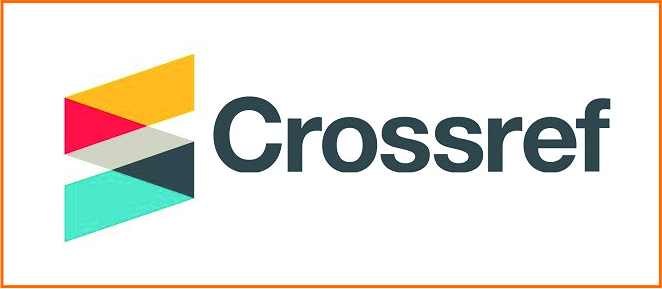The Quality of Open Spaces in Campus: Perception and Social Interaction
Abstract
This study examined three university open space case study locations: the University of Teknokrat Indonesia (UTI), the University of Bandar Lampung (UBL), and IIB Darmajaya. The purpose of this study was to evaluate the correlation between open space and the perception of social interaction of space users. This study used two methodological approaches to evaluate spatial quality: the spatial analysis method and space syntax, specifically to assess the usefulness of visibility graph analysis. As well as measuring the attributes of social interaction of users statistically by distributing questionnaires. This study concludes that the highest correlation among open space interactions is observed in the UTI campus, exhibiting a connectivity value of 7400, an integration value of 27.62, and a thorough vision analysis value of 40151. Meanwhile, the findings of perception and social interaction, based on the results of the questionnaire graph (spatial aspects and social aspects), it was found that the open space on the IIB Darmajaya campus obtained the highest scores for both aspects. Open spaces in the campus area must have spatial connectivity that is easily accessible to space users and have a dynamic open space design. This research is expected to contribute to establishing an open space design in the campus area based on the principles of spatial connectivity and social interaction.
Keywords
Full Text:
PDFReferences
S. F. S. P. J. Atkinson, Wellbeing and Place. London and New York: Ashgate Publishing, 2012.
H. Hanan, “Open Space as Meaningful Place for Students in ITB Campus,” Procedia - Soc. Behav. Sci., vol. 85, pp. 308–317, Sep. 2013, doi: 10.1016/j.sbspro.2013.08.361.
I. Wurianturi, H. S. Hasibuan, and E. Suganda, “Optimizing Open Green Space on Urban Campuses Through the Case of UI Salemba Campus: A Step Towards Improved Green Metric Ranking,” Nakhara J. Environ. Des. Plan., vol. 21, no. 3, pp. 1–24, 2022, doi: 10.54028/NJ202221224.
D. Rosnarti, N. Rahmah, J. Iskandar, and A. B. Purnomo, “Open public space and student use in Campus- A of Trisakti University, Jakarta, Indonesia,” IOP Conf. Ser. Earth Environ. Sci., vol. 780, no. 1, 2021, doi: 10.1088/1755-1315/780/1/012035.
S. Eltarabily, “Toward A Conceptual Framework for Evaluating the Quality of Urban Open Spaces,” J. Sustain. Archit. Civ. Eng., vol. 31, no. 2, pp. 58–84, 2022, doi: 10.5755/j01.sace.31.2.31311.
P. Barlow, S. Lyons, and A. Nolan, “How perceived adequacy of open public space is related to objective green space and individuals’ opinions of area-level quality,” Sustain., vol. 13, no. 15, Aug. 2021, doi: 10.3390/su13158516.
A. Chehab, “EXPLORING THE ATTRIBUTES OF OPEN PUBLIC SPACES IN THE DEVELOPING CITIES,” Archit. Plan. J., vol. 28, no. 2, Sep. 2022, doi: 10.54729/zxxx2193.
S. Han et al., “Behaviour in public open spaces: A systematic review of studies with quantitative research methods,” Sep. 01, 2022, Elsevier Ltd. doi: 10.1016/j.buildenv.2022.109444.
A. A. Farag and R. M. Doheim, “Educating Architecture Students for Sustainable and Environmental Responsibilities,” 2019, pp. 120–136. doi: 10.4018/978-1-7998-0062-0.ch008.
D. G. Özkan, S. Özlü, and S. Dedeoğlu Özkan, “Measuring place satisfaction by university campus open space attributes,” A/Z ITU J. Fac. Archit., vol. 19, no. 1, pp. 137–149, 2022, doi: 10.5505/itujfa.2022.04468.
W. Dixon et al., “Campus spaces and places: Impact on student outcomes Review of evidence Treglown / RIBA Client Adviser Office for Students,” 2022.
N. Mt Akhir, S. R. Md Sakip, M. Y. Abbas, and N. Othman, “A Taste of Spatial Character: Quality outdoor space in campus landscape leisure setting,” Environ. Proc. J., vol. 2, no. 6, p. 65, Nov. 2017, doi: 10.21834/e-bpj.v2i6.987.
B. M. Hillier B., Leaman A.,Stansall P., “Space syntax,” 1976.
Hillier and S. Griffiths, “The Journal of Space Syntax,” Online, vol. 1, no. July, pp. 254–257, 2010, [Online]. Available: http://joss.bartlett.ucl.ac.uk/index.php/joss/article/view/31/pdf_19
I. Benkechkache and M. Kaghouche, “SPATIAL SYNTAX: STUDY BETWEEN SPATIAL CONFIGURATION AND SOCIAL INTERACTION IN THE FACULTY OF ARCHITECTURE IN CONSTANTINE,” Int. J. Innov. Technol. Soc. Sci., no. 1(37), Mar. 2023, doi: 10.31435/rsglobal_ijitss/30032023/7964.
F. D. K. Ching, ArsitekturBentuk, Ruang, dan Tatanan. Jakarta: Erlangga, 2008.
Teknokrat, “Teknokrat Kembali Raih UI GreenMetric 2024, Kampus Hijau Terbaik Luar Jawa.”
A. Turner, “Depthmap 4 A Researcher’s Handbook,” 2004. [Online]. Available: http://www.vr.ucl.ac.uk/depthmap/depthmap4.pdf
P. Koutsolampros, K. Sailer, T. Varoudis, and R. Haslem, “Dissecting Visibility Graph Analysis,” Proc. 12th Sp. Syntax Symp., pp. 191.1-191.24, 2019.
Varoudis, “depthmapX Multi-Platform Spatial Network Analysis Software.”
E. Wijaya et al., PENGANTAR STATISTIK (Konsep Dasar untuk Analisa Data). [Online]. Available: www.sonpedia.com
A. Van Nes and W. Tan, The 1rst international online space syntax PhD conference Book of abstracts. 2021.
S. H. Creem-Regehr, E. M. Barhorst-Cates, M. R. Tarampi, K. M. Rand, and G. E. Legge, “How can basic research on spatial cognition enhance the visual accessibility of architecture for people with low vision?,” Dec. 01, 2021, Springer Science and Business Media Deutschland GmbH. doi: 10.1186/s41235-020-00265-y.
K. Sailer, P. Koutsolampros, M. Z. Austwick, T. Varoudis, and A. Hudson-Smith, “Measuring Interaction in Workplaces.” [Online]. Available: http://allthingsd.com/20130222/physically-together-heres-the-internal-yahoo-no-work-from-
A. F. Tedjari and M. Abbaoui, “Space Syntax for Evaluating Attractivity and Visit Frequency A Comparative Study of Two Public Squares of Downtown Setif (Algeria),” 2023. [Online]. Available: www.etasr.com
N. Charalambous and M. Mavridou, “Space Syntax: Spatial Integration Accessibility and Angular Segment Analysis by Metric Distance (ASAMeD),” Angela Hull, Cecília Silva Luca Bertolini Access. Instruments Plan. Pract., pp. 57–62, 2012, [Online]. Available: http://www.accessibilityplanning.eu/wp-content/uploads/2013/01/3-ASAMeD-R.pdf
D. Esposito, S. Santoro, and D. Camarda, “Agent-based analysis of urban spaces using space syntax and spatial cognition approaches: A case study in Bari, Italy,” Sustain., vol. 12, no. 11, 2020, doi: 10.3390/su12114625.
F. Othman, Z. Mohd Yusoff, and A. R. Abdul Rasam, “Isovist and Visibility Graph Analysis (VGA): Strategies to evaluate visibility along movement pattern for safe space,” IOP Conf. Ser. Earth Environ. Sci., vol. 385, no. 1, 2019, doi: 10.1088/1755-1315/385/1/012024.
I. Omer and N. Kaplan, “Using space syntax and agent-based approaches for modeling pedestrian volume at the urban scale,” Comput. Environ. Urban Syst., vol. 64, pp. 57–67, 2017, doi: 10.1016/j.compenvurbsys.2017.01.007.
A. Penn and A. Turner, “Space syntax based agent simulation,” Pedestr. Evacuation Dyn., no. January 2001, pp. 99–114, 2001, [Online]. Available: http://eprints.ucl.ac.uk/2027/1/penn.pdf
DOI: http://dx.doi.org/10.36448/ja.v15i2.4254

This work is licensed under a Creative Commons Attribution-NonCommercial-NoDerivatives 4.0 International License.
JURNAL ARSITEKTUR saat ini terindeks:











This work is licensed under a Creative Commons Attribution-NonCommercial 4.0 International License




